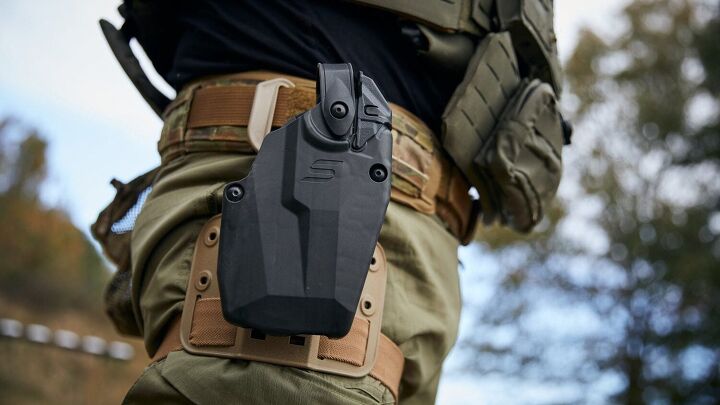I recently had the opportunity to attend a special event put on by the Safariland Group down in Florida. Just about an hour or so north of Orlando in the middle of nowhere lies Deep Woods Ranch – the home of form Navy SEAL Rich Graham’s training facility Full Spectrum Warrior. Full Spectrum Warrior is a firearms training and consulting outfit that offers both public and private classes throughout the year with course topics ranging from leadership courses, to land navigation and even precision rifle and reconnaissance courses. Safariland’s main goal in bringing us out to the FSW facility was to provide a clear understanding of their retention levels, how they work, and what those extra levels of retention can provide the wearer in terms of both personal and firearm security. Today my aim is to pass along that understanding in the hopes that it’ll clear up some of the recent confusion surrounding the “retention leveling system” that many holster companies have started to adopt for their own active retention holsters. In the next article, we’ll talk about why these retention systems are important.
More from Safariland @ TFB:
- Cookie Monsters! Safariland Limited Edition Chocolate Chip 6000 Holsters
- Safariland Adds New IncogX Holsters For Smith & Wesson Models
- Strap ‘Em In, Boys! NEW Safariland Solis Holsters for Glock G17 & G19
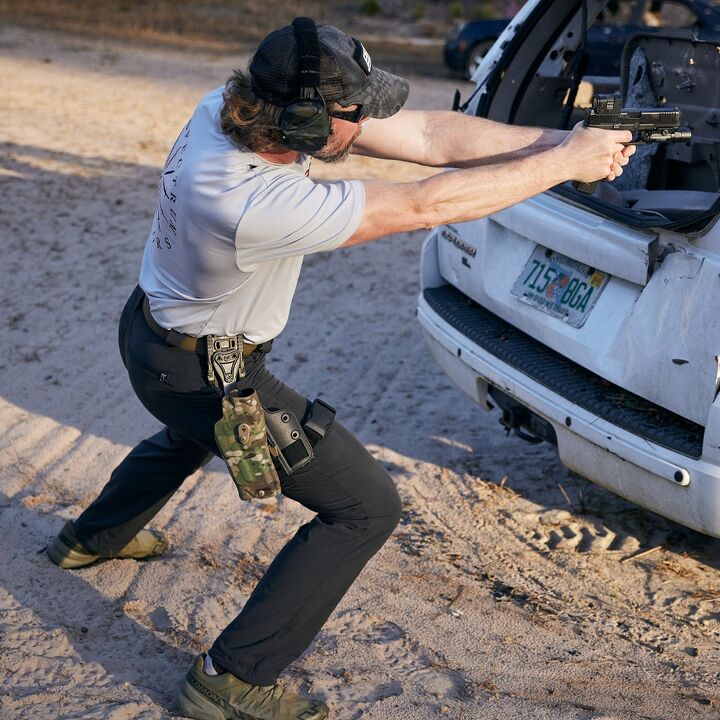
Understanding Safariland’s (Simple) Retention Leveling System | Photo: Safariland
Understanding Safariland’s (Simple) Duty Rated Retention Leveling System
So let’s start off with Safariland retention levels. Former FBI Agent Bill Rogers developed the first Kydex holster in 1972. He started the Rogers Holster Company in 1973, which was eventually purchased by Safariland in 1985. To this day he continues to develop holsters with Safariland, and I’ve even had the pleasure of attending his shooting school which he still operates and teaches at today. Rogers’ entire motive for developing better holsters was to better safeguard patrol officers against having their weapons stolen and used against them.
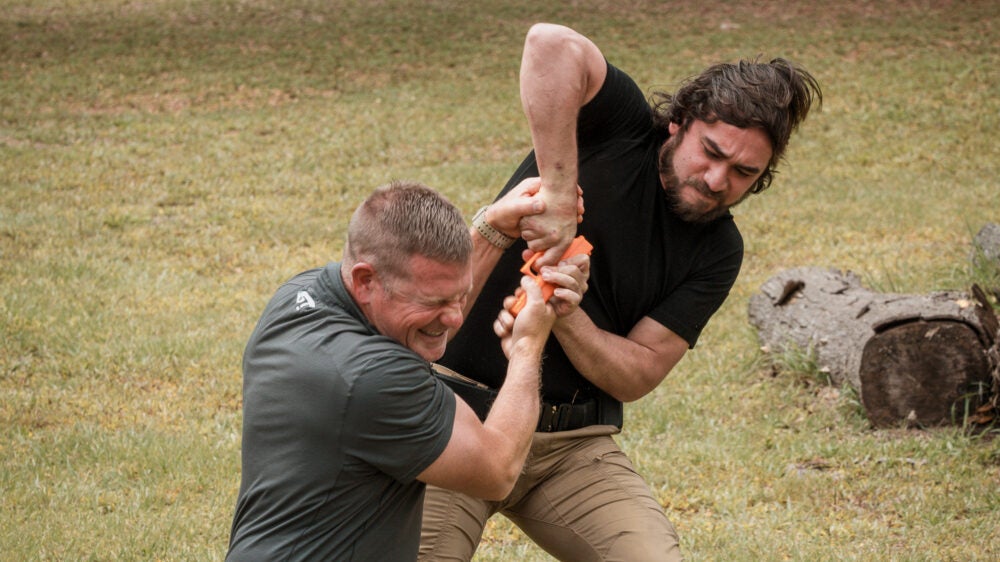
Understanding Safariland’s (Simple) Retention Leveling System
Bill’s developments would eventually lead to the invention of the Automatic Locking System holster, better known by its abbreviation “ALS.” This first iteration, now dubbed a Level I retention holster, removed the clumsy thumb straps of yesteryear and replaced them with a sleek modernized polymer solution that not only kept your firearm secured in its holster but also helped prevent threats from easily snatching the firearm from its holster. Since then, Safariland has developed two additional levels of Duty Rated retention holsters and the explanation as to how each new Safariland retention holster is classified is simply as follows:
Safariland’s Duty Rated Holsters are categorized into four different Retention Level based on the number of hand movements required to clear the security mechanisms before the firearm can be drawn.
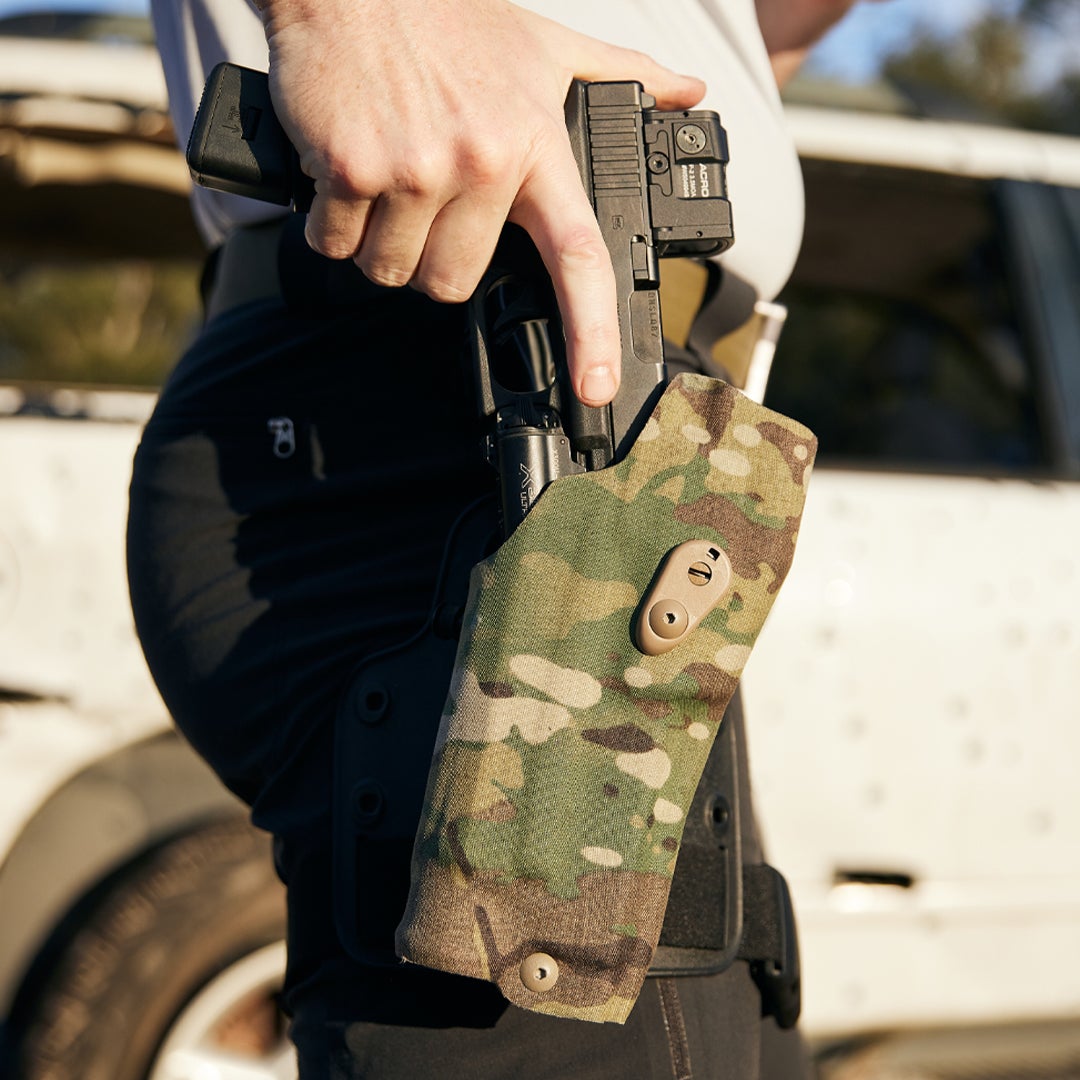
Photo: Safariland
This might seem absurdly simple to most of you reading this and you’re right – it is. While at Full Spectrum Warrior, we had the chance to interact with Safariland team members ranging from marketing coordinators to product development engineers. All of them told us that their retention leveling system seems to be the most confusing thing about their holsters for customers and they think it’s partly due to the emergence of other retention holsters from other companies – not that they have anything against having healthy competition. The issue seems to arise from other companies using similar terminology to describe their own version of a “Level II” or “Level III” retention holster to what Safariland would only consider a Level I holster (i.e. one distinct hand motion to defeat all of the retention mechanisms).
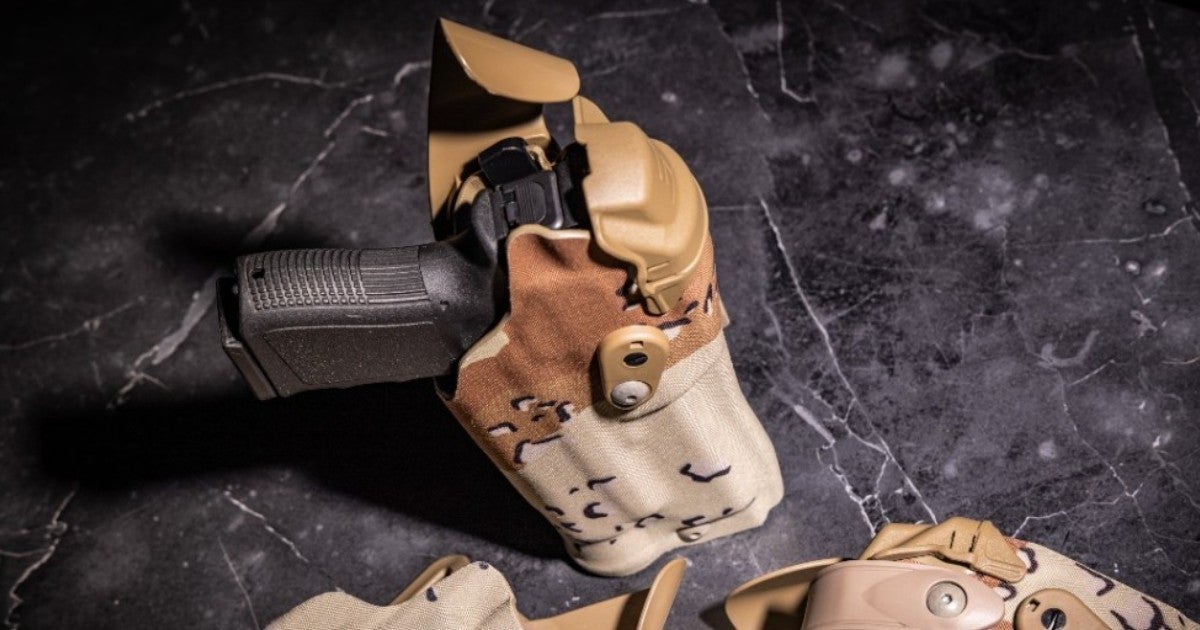
Photo: Safariland
To be clear, while Safariland Duty Rated holsters require one distinct hand motion for each retention system (and therefore adding an additional “level” of retention), retention holsters from other companies don’t necessarily follow this same definition and will often claim to have Level II retention capabilities (gun lock, rear strap, hood, etc.) while in reality, their holster will use one button, or one motion to clear all of the retention mechanisms. Some of these companies claim that the passive retention that you get from a Kydex design counts as Level I retention. Safariland doesn’t even consider their own passive retention holsters to be part of their leveling system at all even though they technically “retain” the firearm in the holster via pressure from the holster design. Hopefully, that clears things up and we can all retain this information when we’re making future holster purchases.
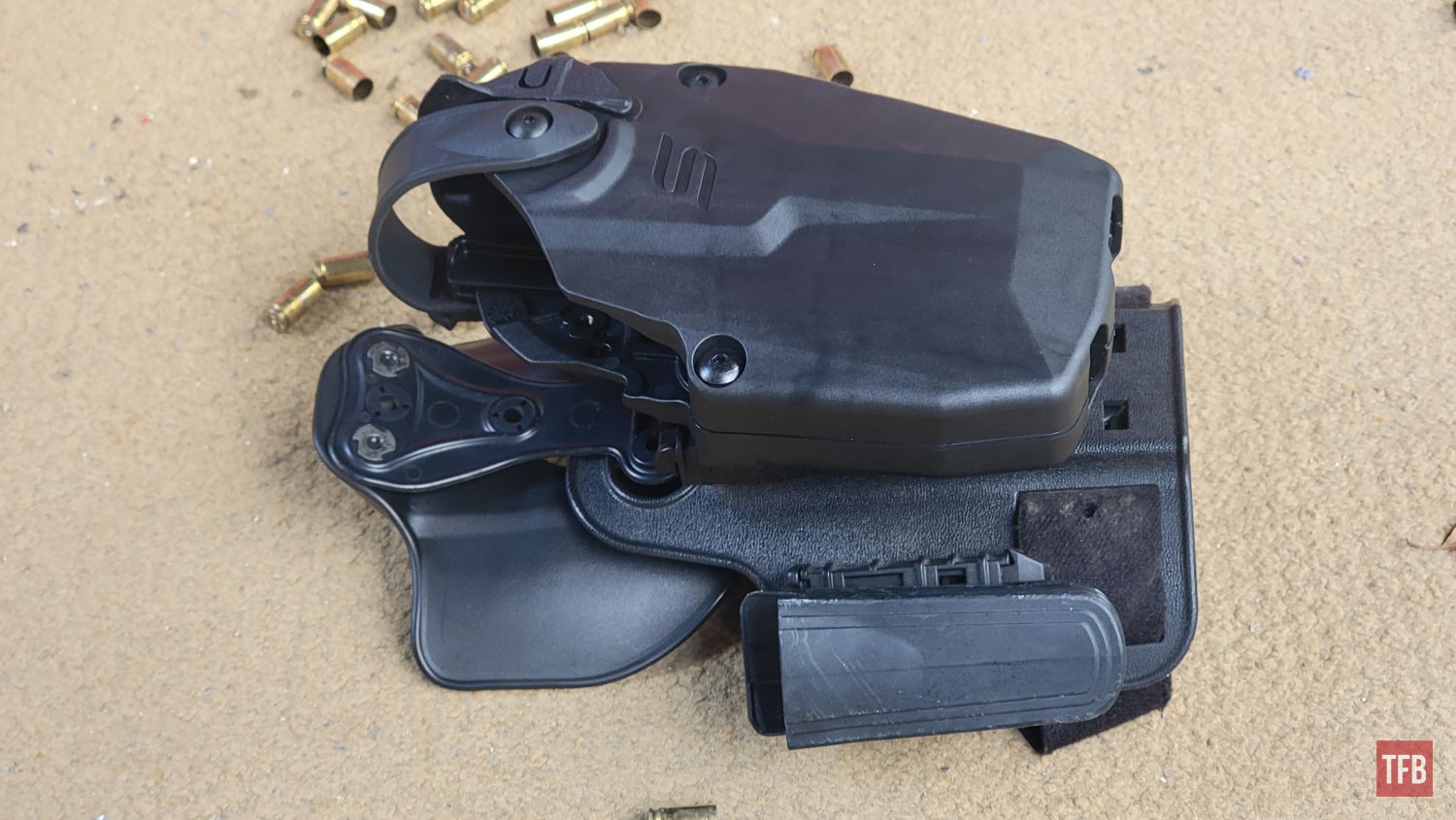
Understanding Safariland’s (Simple) Retention Leveling System
Next: Why Retention Is Important (and when it’s not)
In the next article in this series, we’ll take a look at how these retention systems help keep firearms out of the hands of the wrong people, and also how you can properly take advantage of these active retention systems. We were given a ton of freedom within Rich’s guidance to run the sorts of drills we wanted and Rich and his team did a great job of not only helping all of us gain a better understanding of the tactics and methods he taught but also encouraging us to experiment with different methods to find what was most efficient for a wider variety of situations.
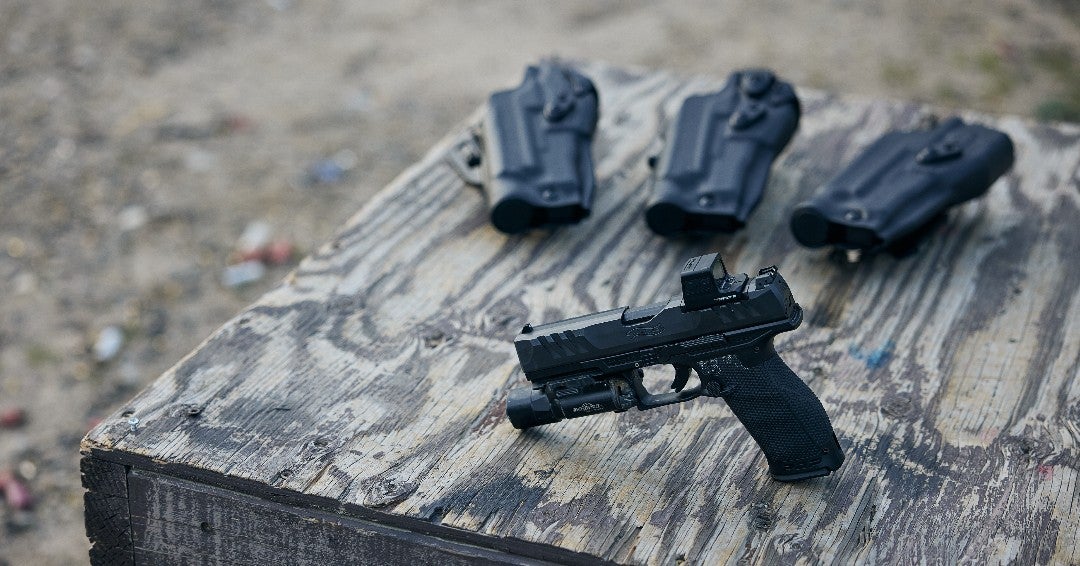
If you’re looking for a specific level of retention, safariland even has its holsters organized by retention level:
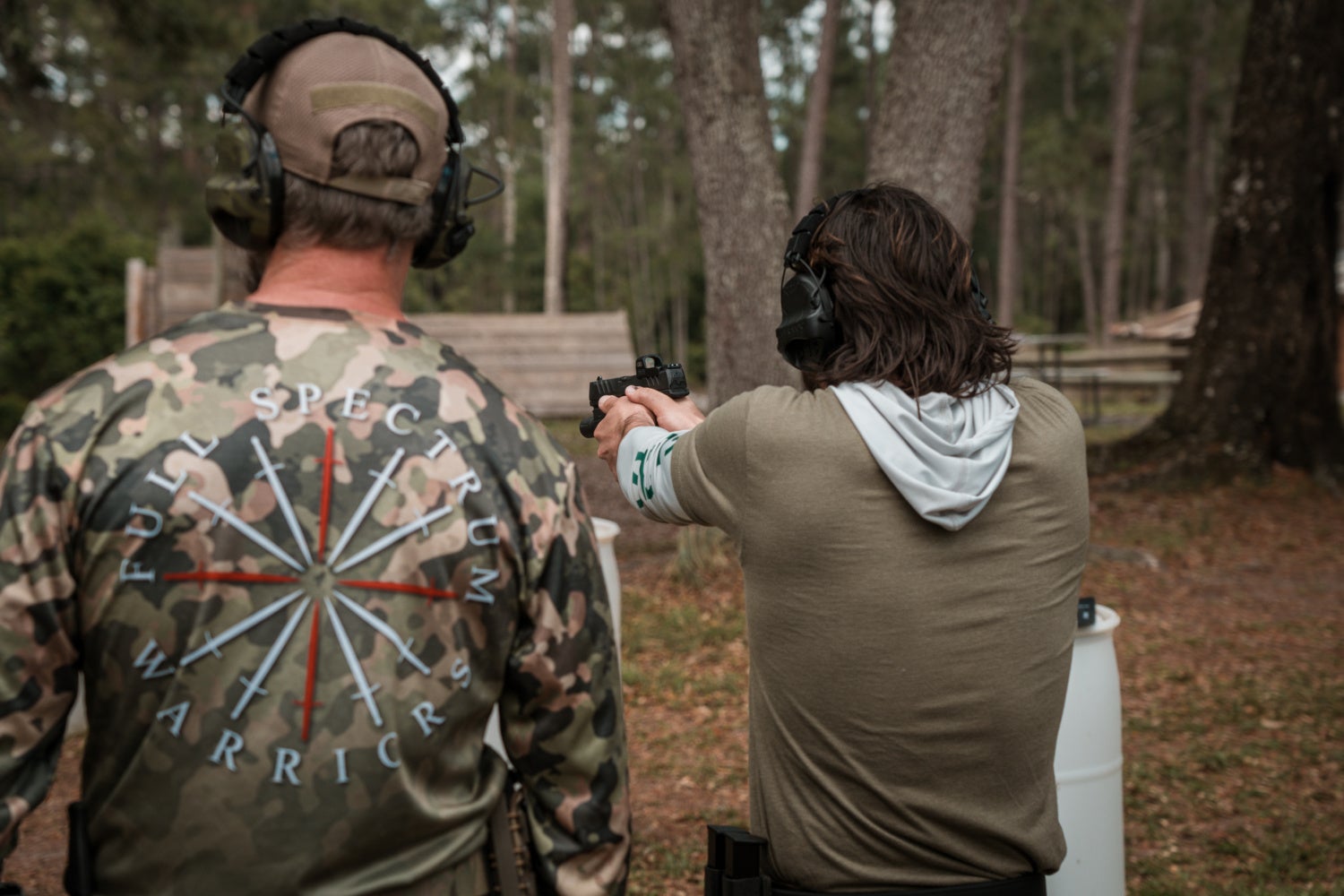
If you’re interested in learning more about Rich Graham and the Full Spectrum Warrior training facility, you can tune in to TFB’s Behind the Gun podcast where we’ll be hearing from Rich Graham himself, as well as directly from Safariland to talk about their company history. In the meantime, let me know your thoughts and if you agree with Safariland’s method for defining retention levels. Thanks for reading!
We are committed to finding, researching, and recommending the best products. We earn commissions from purchases you make using the retail links in our product reviews. Learn more about how this works.
 Your Privacy Choices
Your Privacy Choices